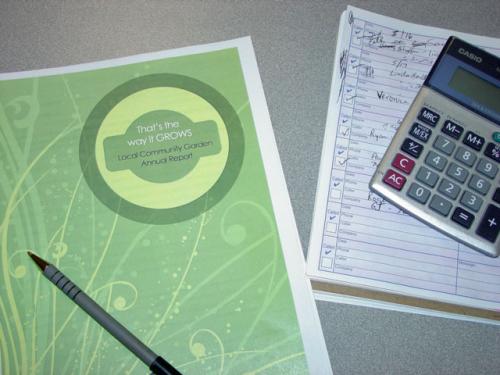Learning from past community gardening efforts in order to improve your future
Seeking feedback from your members can help to guide your future successes by taking the time to review and evaluate community garden program efforts.
Once a community garden is organized and picks up momentum through membership and structure, it is a good time to get some feedback from your members. Previously, Michigan State University Extension published a related article, “Community gardens organizations need structure and strategic planning,” in which I discussed the use of strategic planning and understanding organizational structure evolution. In this installment we will take a look at why evaluation can help determine if you are meeting your goals and your mission.
Evaluating the progress of specific projects is important because you can measure factors important to the organization such as: value or worth, effectiveness and participation rates. Maybe you want to know if desired outcomes are reached or even if the garden members like the new seed choices. Many groups and organizations make use of regular periodic evaluations to encourage feedback from employees, clients, and customers. Getting the information you are seeking from your evaluation is the important part.
Effective evaluations provide indicators that can demonstrate the value of your community garden to the neighborhood, local officials, financial supporters, and the greater community. Making use of an evaluation depends on what you want to learn from it. Begin by identifying what is to be evaluated (a program, project, or activity), for example, you want to know if people learned organic gardening techniques at one community garden that promotes those practices.

Next determine who the information gained will benefit and what specific information they may want to learn. This is important because, continuing the example above, let’s say that one of your funders is a local conservation group that values an organic gardening approach. This is the party who would most benefit from this information. You could just as easily evaluate your volunteers and garden renters about how things are being run. This would make the garden organizers the recipients of the information gained so they can adjust accordingly.
Crafting your evaluation instrument and who you wish to include in the evaluation is important. Questions that relate to participation, activities, reactions, short term changes in behavior or attitude, changes in gardening practice, and long-term changes can all be used. Also consider inquiring about quality of experience, or suitability of a program, or how efficient.
Types of evaluations are variable and valuable information and data can come from many sources. Direct observation and information from small informal groups can be helpful. Another option might be through group assessment such as a focus group setting; surveys are the most common and come in a variety of formats; or a mix of any of the above. Evaluations can also include information collected from other sources that have already collected sources of data. These might include: police records for crime rate changes, school records for graduation rates, and other public data.
Then, communicate your results. Often the survey respondent is interested in the resulting report, so are your stakeholders and other supporters. Finally, use the information you gathered to improve where you can. Evaluations are first and foremost a valuable tool that can show you where you are doing well and where you may need improvement.



 Print
Print Email
Email




